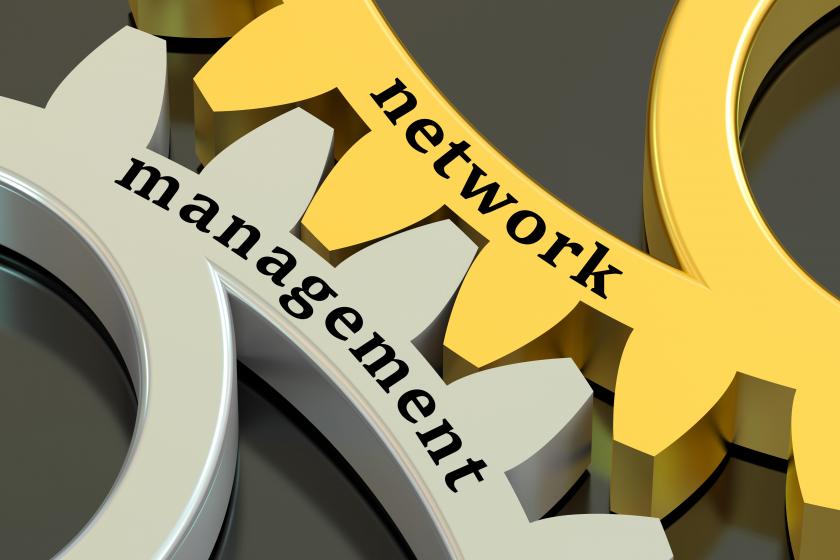Picking the Right Network Management Option
Developments in network management options open the door to alternative ways that businesses can manage their LANs and data centers.
May 30, 2023

It used to be that the only way to manage an enterprise network was to hire highly skilled network professionals and implement a handful of monitoring and alerting tools from which to gain network performance, health, and security visibility. That approach to network management remains a viable option today. However, some businesses struggle to find and keep competent staff and are continuously grappling with network flexibility and growth as NetOps teams largely focus on maintaining network uptime – not ways to help facilitate strategic growth.
For those that are seeking alternatives to traditional network management, two different models are rising to the top. The first is Network-as-a-Service (NaaS) which essentially offloads the management of an enterprise network to a third-party service provider. The second is to use modern orchestration and automation tools that eliminate manual processes and incorporate artificial intelligence (AI) and machine learning (ML) into the monitoring and alerting processes. Let’s look a bit more closely at NaaS and modern orchestration/automation tools to help determine if either alternative is a good fit for your business.
The slow but steady rise of NaaS for network management
As-a-service models have been around for over a decade and largely revolved around the enterprise’s acceptance and trust in cloud computing models. This led to a rise in migrations of servers, storage, applications, and services to IaaS, PaaS, and SaaS cloud models. This move to the cloud has led to a major operational shift in IT departments from being a hardware-centric department – to one that is software-centric with outsourced infrastructure management. The one exception to this, of course, is the corporate network. Because network equipment remains physical and must be deployed on location within corporate and branch offices, the way the businesses manage this hardware and software has largely remained in-house.
What has occurred in the network space, however, is the growth in cloud-managed networking equipment that allows administrators to manage their entire network portfolio through a cloud orchestration platform. Initially, this cloud-management model helped IT departments to deliver improved management flexibility as NetOps staff had “anywhere access” to network configurations and visibility tools. Taking this concept one step further, cloud-managed network devices open the door to networks being fully managed by a third party.
Perhaps the biggest network management challenge that needs to be overcome, however, is the nagging need for network administrators to be physically present to conduct advanced troubleshooting and for the occasional equipment replacement when hardware failures occur. This is the biggest hurdle that NaaS providers must overcome, and it will take a great deal of confidence in the provider to be able to deliver both the remote management and on-site support that many businesses are seeking.
Looking at the current NaaS market, businesses now have multiple options to partner with an existing service provider or consulting company that also manages networks on their customers’ behalf. Alternatively, network vendors and emerging NaaS startups are formulating their own managed network service options that not only provide hardware and software support – but also facilitate the design, implementation, and ongoing management of a network. These NaaS providers tout the performance and security benefits of the NaaS model with the ability to scale upward effortlessly at a moment’s notice.
Simplifying network management
While NaaS may make sense for some businesses, the risk of losing control over network configurations is sometimes too big to ignore. For these organizations, the use of modern orchestration and automation tools may be a better option.
Traditional enterprise networks are managed on a hop-by-hop basis and are configured using complex command line (CLI) syntax. Because of this, network administrators must be well-versed in the proper ways to configure network components to ensure uptime, performance, and security. If not properly managed, these manual processes can quickly lead to network outages or gaps in security. This often results in costly outages and networks that underperform.
Although network orchestration and automation tools are still a relatively new concept, they’re gaining interest within the enterprise networking world because they work to eliminate manual configuration errors, which are by far the leading cause of infrastructure outages. By forcing network configurations to be managed and analyzed through an intelligent network orchestration platform, the tool intelligently reviews all network changes to validate that they won’t negatively affect the network. It’s like having a set of guardrails on a bowling alley lane for network configurations. In turn, the orchestration and automation toolset can help prevent catastrophic failures from occurring, which speeds up the ability to make network changes without the need to perform painstaking and time-consuming configuration reviews by qualified staff.
NaaS and orchestration cost vs. network confidence
It’s safe to say that NaaS and modern network orchestration/automation tools come with an added cost. That said, for businesses that are struggling to find networking skills, both network management alternatives require fewer in-house resources and can deliver improved network uptime, reliability, performance, and security. When factoring in all these benefits, the investment may prove to deliver a better ROI compared to traditional network management methods.
Related articles:


